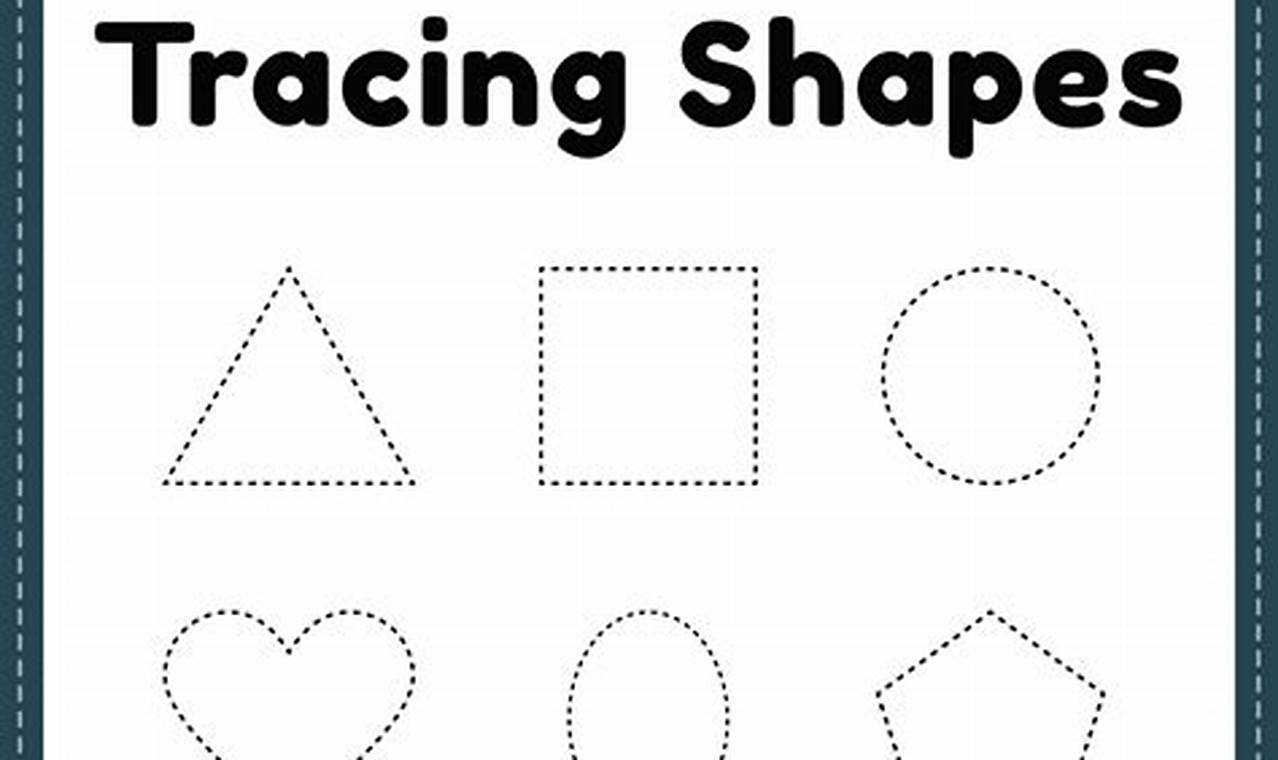Shape tracing provides a foundational activity for young learners and those with special needs, setting the stage for more complex tasks. This seemingly simple exercise lays the groundwork for handwriting, spatial awareness, and visual perception, skills crucial for academic success and everyday life.
The use of “shape tracing for special needs students” enhances several essential skills. It improves fine motor control, allowing for more precise hand movements. It also aids in visual discrimination, the ability to distinguish between different shapes. Furthermore, it fosters pre-writing skills necessary for later letter formation and handwriting development. The repetitive nature of tracing can also improve focus and concentration, valuable assets for students with attention challenges.
This worksheet focuses on fundamental geometric shapes, including circles, squares, triangles, rectangles, and ovals. Each shape is presented with a dotted outline, providing a clear visual guide for tracing. The lines are intentionally bold and thick to make them easier to see and follow. Ample space is provided around each shape to allow for comfortable hand movement and prevent visual clutter. Fun, simple illustrations often accompany the shapes to maintain engagement and make the activity more enjoyable.
To use the shape tracing worksheet effectively, start by ensuring the student has a comfortable grip on a writing tool, preferably a thick pencil or crayon suitable for small hands. Guide the student to begin tracing at the designated starting point, usually indicated by a dot or arrow. Encourage slow, deliberate movements, emphasizing staying within the dotted lines. If needed, provide hand-over-hand assistance to help guide the pencil. Break the task into smaller segments, focusing on tracing one shape at a time to avoid overwhelming the student. Positive reinforcement and encouragement are vital to maintain motivation and build confidence.
To further reinforce learning, incorporate related activities. Complement shape tracing with activities like shape sorting using blocks or drawing shapes in sand. Explore other resources on Kidtraces.com for additional worksheets focusing on letter tracing, number tracing, and fine motor skill development. Engaging in simple daily tasks, such as drawing shapes with fingers in the air or identifying shapes in the environment, can also solidify understanding and improve retention.
In summary, the “shape tracing for special needs students” worksheet offers a valuable tool for developing essential pre-writing and fine motor skills. By providing a structured and engaging approach to shape recognition and tracing, it lays a strong foundation for future academic and life skills. Download the worksheet today and explore the many free resources available on Kidtraces.com to support continuous learning and skill development.
